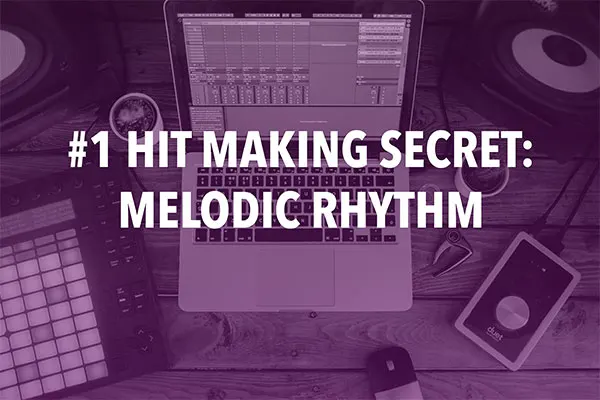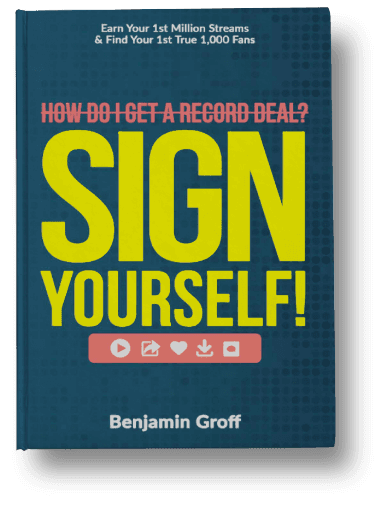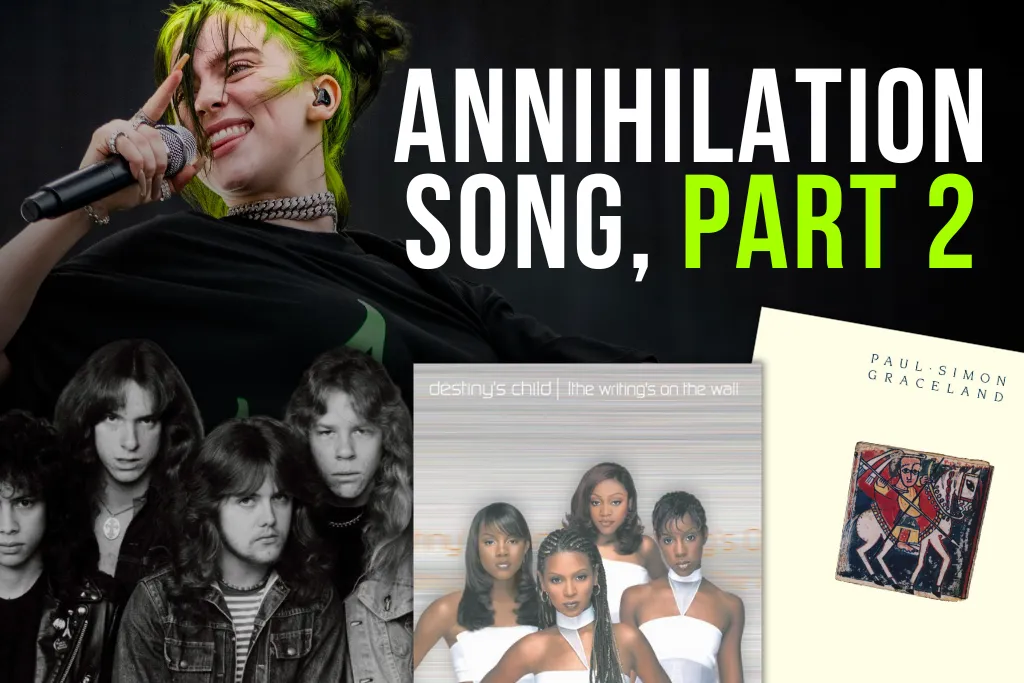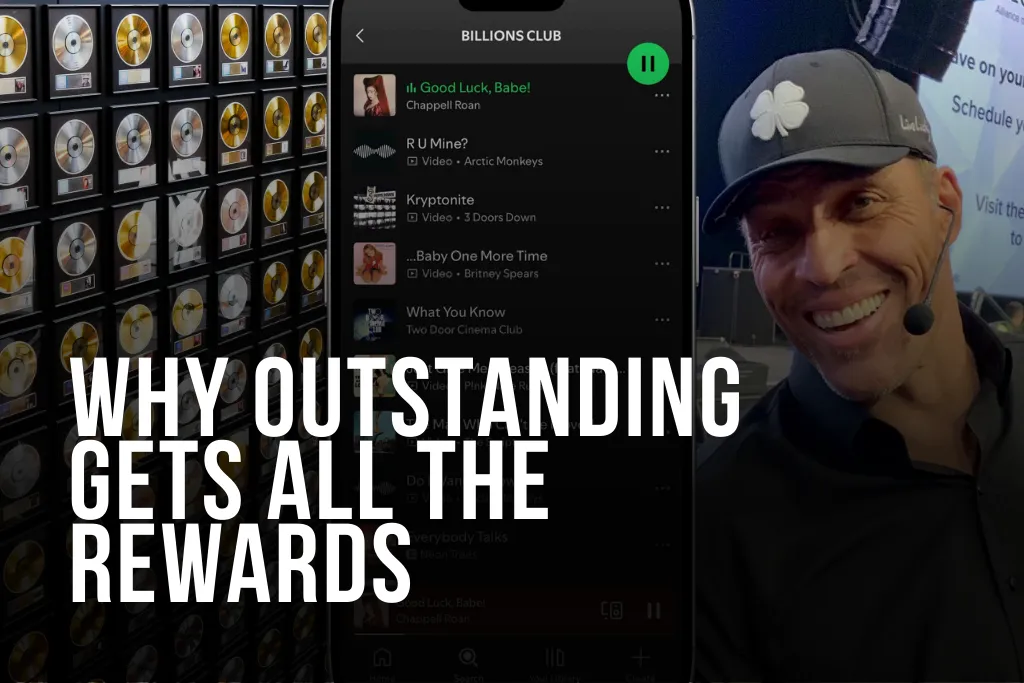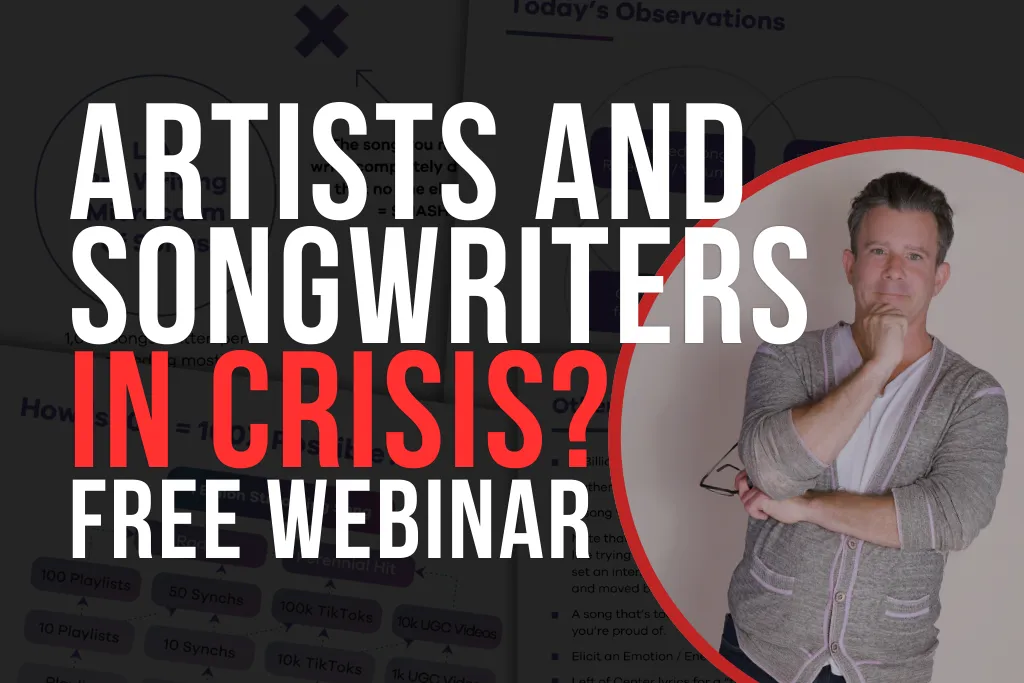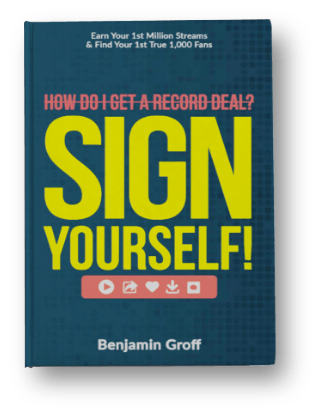- The Tao of Melodic Rhythm
- Essential Hit Songwriting Tool Kit
- What Is a Song?
- Prehistoric Hit Makers – The First Hits Were Played on Logs
- The Dance Floor Is Tribal, Too
- “Three Blind Mice” is Global Smash for the Ages
- Melodic Rhythm – Any Genre, Any Decade
- Lock It Up
- Melodic Rhythm Origin Story
- “God’s Plan” has the God Particle of Hit Making
- Writing Exercise!
- The Hit Songwriting Trio
Photo by Duncan Kidd on Unsplash
Hello, young spell song caster! Let me guess?
You’ve been looking far and wide for that “hit songwriting” special sauce, that unique magical hit equation, or I don’t know, a special amulet you can wear around your neck – and that – simply by chanting a magic spell, you can have the power of hit songwriting.
Well, good news. Step aside, Gandalf.
You’ve found it.
This is it. This is the post where you may potentially receive (in my opinion) that million dollar epiphany. What I’m about to tell you is the cornerstone of any hit song.
Top charting artists and songwriters are already doing this – whether they know it or not!
So, let me enchant you and come this way.
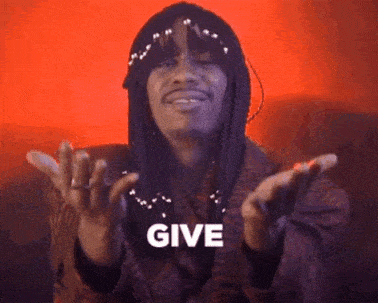
Dave Chappelle
p.s. good news for you it only took $130,000 in Berklee College tuition fees (adjusted for inflation) to bring you this hardly discussed, rarely identified #1 most important item on your checklist for hit songwriting.
Enter – dah dah … the power of melodic rhythm.
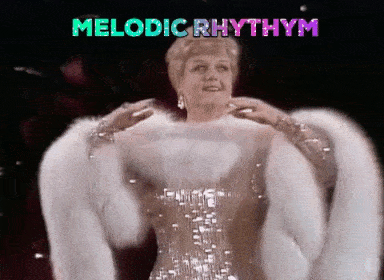
Angela Lansbury
The Tao of Melodic Rhythm
Melodic rhythm will buy you a house.
Melodic rhythm will make your dreams come true.
Melodic rhythm will get you the girls or the guys.
Melodic rhythm is your new best friend.
Respect melodic rhythm. It’s here to serve you and put many, many six and seven figure royalty checks in your mailbox.
In fact, this songwriting tip is the #1 cornerstone and foundation tool from my best selling Teachable course, Insider Secrets to Hit Songwriting. And lucky you – if you use code BENJAMIN20 you can get 20% off the course right now.

Now, before we get started on this journey – what exactly is melodic rhythm?
Well, it’s simply the melody of the rhythm that the vocalist sings.
And let’s also be clear. It has nothing to do with the track, the beat, etc. It’s simply the rhythm of the vocal melody.
To put this in context of an actual song – let’s take a look at a recent #1 smash, “Rock Star” by Post Malone.
The melodic rhythm is the way that Post Malone sings, the Hook 1 of “Rock Star.” These are the lyrics:
I’ve been f*ckin’ hoes and poppin’ pillies
Man, I feel just like a rockstar

The melodic rhythm of this section looks like this – just looking at the rhythmic context.

Repeated again and again and again and again and again and again and …
OK, so – you with me so far?
You might be getting the essence of why this concept is crucial in making hits.
In my opinion, “Rock Star” – is only a great hook – ONLY – if the hook includes that infectious repeatable rhythm. Like just the melody without that rhythm – not so much. Just the lyric? Maybe? It’s THE RHYTHM that makes it a smash.
Without the RHYTHM of that phrase, you take away the lifeforce and the DNA or the skeleton of the hook.
Let me say this again – it’s the melodic rhythm first – that I believe makes it a hit.
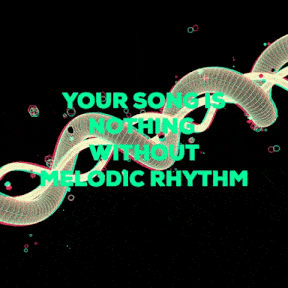
And hey it doesn’t hurt – well actually it’s crucial if you’re shooting to make hit songs on the charts – that your song also has a great unique lyric concept and another concept of what call the 2nd melody aka the “riff” (which is also something no one else talks about – but lucky you can read these posts later here):
Essential Hit Songwriting Tool Kit
Required Hit Factor #2: The Elusive Concept of 2nd Melodies aka The Riff
Required Hit Factor #3: Breakthrough Song Title Ideas & Unique Lyric Concepts
But enough with the internal blog post promotion (but seriously there’s another million bucks for you in those posts!). Let’s get back to our scheduled programming and revealing this #1 secret.
Yes, where was I – oh yes, that thing – melodic rhythm – yes, your new friend, that’s going to buy you a house.
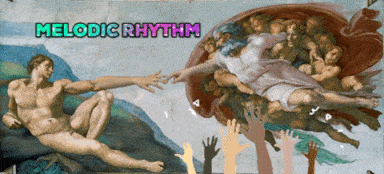
To say it another way – to hammer home how important this is: MELODIC RHYTHM IS THE GOD PARTICLE OF HIT SONGWRITING. And if you’re not converted yet – keep reading.
Have you seen the light?
By now that you know what a melodic rhythm is … there are a few additional concepts I’ll unpack before we get into specific further examples.
The below will really help you “get it” and why – as humans – we have no choice but to bend to the will of melodic rhythm.
So add this one to your power tool kit. In fact – I would start all your writing sessions thinking about melodic rhythm first.
At the end of these next few paragraphs you might even have an epiphany on exactly why you love certain songs. You may even start listening to music completely differently.
Yes, we’re going to explore why it makes sense to start with a lightning in a bottle repeatable melodic rhythm first – and then think about melody and lyric later.
So, first – if you just read thus far and your reaction was “awesome – there’s something here” – great. On the other hand you thought to yourself “nah man, this is b.s.– songwriting comes from the heart” – well, just stick with me here.
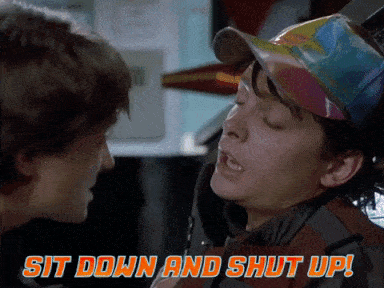
Back To The Future II
Opinions about songwriting (or art, etc) I think can be similar to religion. People are held tightly to their beliefs … and their beliefs have to be right. It’s all they know. How can it not be right. How can their view not be “the way.”
Well, I’m not trying to push this melodic rhythm concept on you, despite my passion for it here. I’m just merely illuminating what I’ve found – over the decades, to be spot on, without a doubt, as my own song religion … and the #1 factor of what makes a hit song.
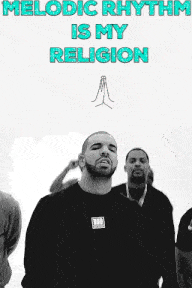
Secondly, we need a quick biology lesson.
Yes – I expound both songwriting wisdom, as well as science and nature and the human condition … because what is songwriting at the end of the day? What is a song?
What Is a Song?
A song actually doesn’t really exist. (I’ve had this personal conversation both with Moby and Evan Spiegel, CEO of Snapchat – and it’s actually their idea!) You can’t touch a song. You can’t weigh it, photograph it, put it in a box, etc.
A song (and a great song) merely evokes a human emotion.
And “emotion” can mean many things! You see, I’m using emotion universally here. The right “emotion” in a song can get you on the dance floor, it can break your heart, it can be an anthem of anarchy, it can get you pumped up for a work out, it can be a great vibe / chill out piece, etc.
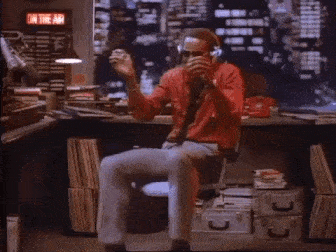
A song (if we’re talking early human beings) can also be a war chant or a fertility dance (thank you Steve Lindsey for that quote).
So here’s the biology lesson.
And it’s really crucial to first unpack this as you’ll soon learn what melodic rhythm is and why it’s “the” cornerstone in hit songs, as it relates to the human condition and resonates with our DNA.
Prehistoric Hit Makers – The First Hits Were Played on Logs
I really believe as humans – we’re still really using “Brain Operating System 1.0.” In other words – while we might get an Apple iOS update every few weeks – our biology as human beings – really hasn’t changed that much in 50,000 to 100,000 + years.
I mean think about it this way. As humans, our DNA is AMAZING (and who knows what’s really in it). For example, what happens if a 3 year old comes across a snake hissing or the mean dog in the neighborhood starts barking furiously? I doubt that the 30 month old will want to go over and want to play. That’s our DNA at work that says “Hey – that’s probably dangerous and not a very good idea!”
Likewise – there are certain elements I believe musically – our brain has adapted to and just really “likes” (and actually “loves”). If you doubt me then ask me why atonal 12 tone row microtonal music hasn’t yet taken off on the charts?
So you see – I think when it comes to songs – melodic rhythm is ingrained in our DNA, as far as what we tune into first as humans – which I’ll soon explain.
You see, when it comes to music – in my opinion, the human brain loves simple melodies that can be easily sung, remembered with repetition.
Now here’s a shocking thing. Melody – is actually a pretty new thing to the human species, relatively speaking. If humans have been around for 200,000 + years, melody has only been around 30,000 (?) years – ish. If that!
That means that as humans, our primary source of “music” – for our species’ existence has been rhythm.
Yes, that means beating on logs, drum circles, war chants and fertility dances.
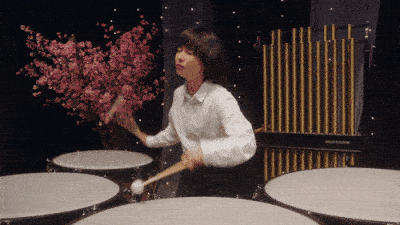
Pen15
And if you really take this back – the earliest “first humans” (Homo habilis) have been around for 2.4 Million years! That’s a lot of drumming and beating on logs baked into our DNA!
And of course – rhythm is also how we first communicated via drums, tree knocks etc.
And even to this day, it’s how some communicate and broadcast (or attempt to communicate) masculinity and dominance (yes, here’s looking at you to the jerk across the street whose 1,000th kick drum will probably disintegrate your ‘98 modified Toyota Camry with dual subwoofers). But I digress.
Before melody … there was only RHYTHM!
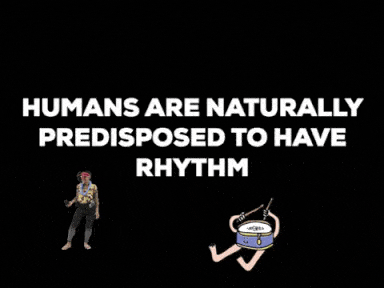
As humans, that’s what we tapped into! And still do!
The Dance Floor Is Tribal, Too
Yes, imagine 100,000 BC – the victory around the drum circle after a successful hunt! Or even last weekend whatever drum circle was happening at Venice Beach, CA. I think you’re starting to see how important rhythm is!
On the other hand – melody – circa 40,000 BC – probably not so much – there were no guitars, pianos, banjos, or sadly – not even a moog (sheds tear).
But even if we were to move forward in a time machine – to say only a few hundred years ago, you can easily understand via nursery rhymes, the power of rhythm. Thus my working thesis: “great hooks are not great melodies – they’re great rhythms first.”
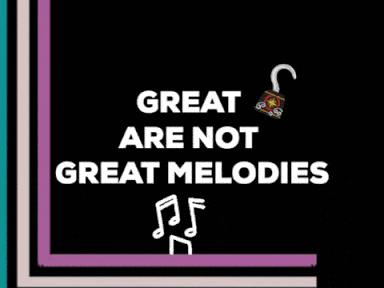
On that note, let’s take a look at this global banger smash (line by line):
1) Three blind mice
2) Three blind mice
3) See how they run
4) See how they run
5) They all ran after the farmer’s wife
6) She cut off their with a carving knife
7) Did you ever see such a sight in our life, as
8) Three blind mice.

Wow – I know what you’re thinking. First, what a gruesome story to sing to your kiddies! Second – this song is a smash!
Well, kidding aside – it REALLY is. “
“Three Blind Mice” is Global Smash for the Ages
Three Blind Mice” is even bigger than, I don’t know – “Beat It” by Michael Jackson (not to mix Michael Jackson and kids too much – ooh) but “Three Blind Mice” is a song that almost any and every English speaking person in the world knows and can sing back.
Why is that? It’s the melodic rhythm. This nursery rhyme is basically 2 “hot” simple rhythms.
Here are the 2 rhythms.
Rhythm #1) Dah. Dah. Dah. (three quarter notes) comprising lines 1 through 4 and the last line to wrap up the song with the title “Three Blind Mice” in line 5.

Rhythm #2) Deh Dah da-dah-dah-da dahhhh-de dah (a great contrasting rhythm of triplets, ⅛ notes and quarter notes). This rhythm repeats via lines 5, 6 and 7.

And that’s it! Can it be this easy? Yes!
Let’s take a look at a modern song that – in my opinion, as far as an infectious hook leve, is not so far from “Three Blind Mice!” Also – a song that any pop music fan should instantly know and be able to sing back. Let’s take a look.
1) Yo, I’ll tell you what I want, what I really, really want (Call)
2) So tell me what you want, what you really, really want (Response)
3) I’ll tell you what I want, what I really, really want (Call)
4) So tell me what you want, what you really, really want (Response)
5) I wanna, (ha) I wanna, (ha) I wanna, (ha) I wanna, (ha)
6) I wanna really, really, really wanna zigazig ah
Again, we have 2 primary melodic rhythms.
Rhythm #1) I’ll tell you what I want, what I really, really want.

I mean if you want a melodic rhythm that’s lightning in a bottle – look no further. I remember first hearing this song, “Wanna Be” and remembering how this tune, even to this day, EXPLODES off the speakers with such energy.
And that’s what great melodic rhythms do – they HOOK you immediately. They bring the DNA and lifeforce and jet fuel into your song! It’s undeniable. And then – sprinkle in a great melody and a unique concept on top of that and you likely may just have a global hit.
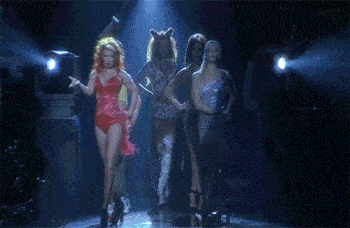
Rhythm #2) OK we have another rhythm in this song, and it may be even more infectious than the first one! Here – we have an awesome call and response section with “I wanna” (the call), and “Ha!” (the response).
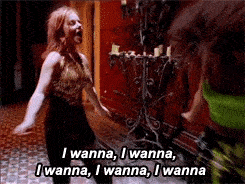

This rhythmic force for me is the equivalent of Muhammed Ali punching energy into your ears … jib / jab / cross / uppercut – zipping and gliding – KAPOW! – KNOCKOUT! These rhythms are just pounding pure phrases of energy into your ear drums. And then, you’re ready for the last line.
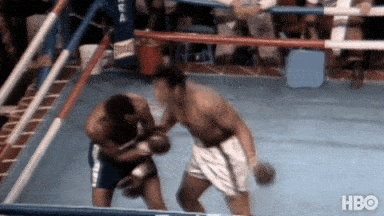
HBO
Rhythm #3 / The Outlier Rhythm) Last line – something that’s interesting here is I often notice that the last lines of chorus, or where the song title is – often may have a melodic rhythm or phrase that is completely different from the other melodic rhythms in the section.
In this way – it puts the “spotlight” on the song title – it stands out!
In this case … the last line’s melodic rhythm is changed up a little: “I wanna really, really, really wanna zigazig ah.” And what is a “zigazig ah” anyway – ? Hmm, I have my suspicions.
Now, don’t worry. If Spice Girls isn’t your speed – that’s all fine and well. We’ll check out some other examples.
For myself, I honestly can equally and thoroughly enjoy “Wanna Be” – and that level of melodic rhythm energy, as much as I can get lost within Nine Inch Nails “Closer.”
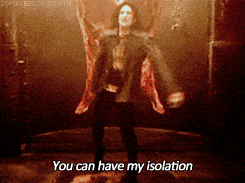
NIN – Closer
For me – it’s a similar level of energy – or should we say, a similar amount of melodic rhythm and emotion that is captured in a tune (although that emotion is completely different).
And while I don’t talk about it much – that’s how I experience (and sign) music I love. I’m simply tapping into what level of energy and emotion is there.
How much of this does the song contain?
And for me – it all starts with melodic rhythm.
Now, I know what you’re thinking – can making hits be this simple?!
I told you already! : )
Melodic Rhythm – Any Genre, Any Decade
Let’s take a look at another song – how about, i don’t know, a defining song of the 90s which kicked off the alternative grunge movement, Nirvana’s “Smells Like Teen Spirit.” (Sadly, my hair metal days were finished after this one).
And I know what you’re thinking. Kurt Cobain and Spice Girls and nursery rhymes have nothing in common.
How dare you! Hmm – I beg to differ.
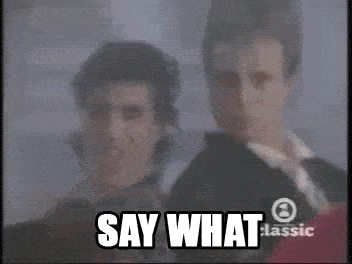
At the core – all these songs are incredible pieces of songwriting. Period.
And – at the core of the core each delivers homerun melodic rhythms.
Please note – All of the songs mentioned thus far, contain melodic rhythms that are super infectious, that repeat, that contrast between sections of the song (verse / pre / chorus / bridge, etc) and lastly – that are ORGANIZED.
And this is also a clear distinction between just “OK” songs and hits. HITS have melodic rhythms that are organized.
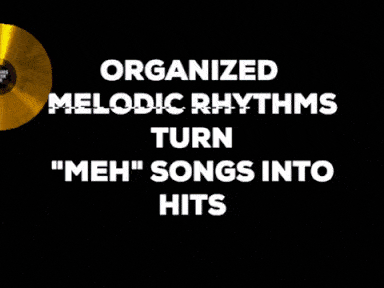
On the other hand, random “whatever” songs (there’s a special genre in hell called the “W” genre, which is the bane of my existence) – have random, unorganized melodic rhythms.
I actually hear it time and time again that the hit songs – of any genre – in any decade have what I call “locked in” melodic rhythms.
Lock It Up
And by “locked in” – I mean infectious melodic rhythms that repeat! Often this is as simple as just 1 melodic rhythm per individual section. That’s it! (Stay tuned for a special playlist below where I give you an assortment of my favorite melodic rhythm examples via all genres and all decades)
On that note, let’s get back to Nirvana’s “Smells Like Teen Spirit.”
This is not just a classic iconic song – but in my opinion, a classic example of “locked in” amazing melodic rhythm at work. You’ll see here that Kurt (R.I.P.) is essentially using one melodic rhythm statement per section of the song.
Rhythm #1)
Load up on guns, bring your friends it’s fun to lose and to pretend
She’s over-bored and self-assured, oh no, I know a dirty word
Ok – this is one melodic rhythm here repeated – a melodic rhythm that’s long and languid. The melodic rhythm looks like this:

Now let’s look at the pre chorus … notice anything here?
Rhythm #2)
Hello, hello, hello, how low
Hello, hello, hello, how low
Hello, hello, hello, how low
Hello, hello, hello, how low
Here’s what this repeated melodic rhythm looks like.
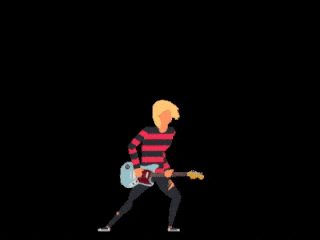

That’s right. We have another locked in melodic rhythm.
So far – one melodic rhythm per section. Is making epic songs this easy?
Maybe. Maybe not. But you see – you’re perhaps – starting to get the essence of melodic rhythm and the special DNA of what’s behind your favorites. It’s what makes a great song tick!
It’s not just song psychology – it’s human DNA that’s U N A V O I D A B L E. Let me put it to you this way.
“Smells Like Teen Spirit” is a hit even if you were to play it on a log 100,000 years ago.
In fact – it would be the song that would close out the bonfire – or send the tribe to war- and WIN!
We still have the chorus to talk about. This is the chorus of anarchy and angst that wins the battle.
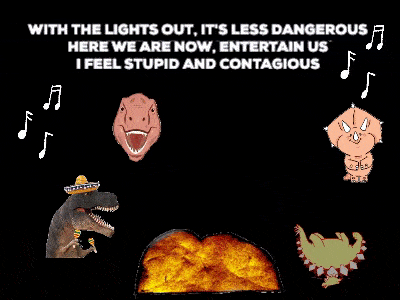
Rhythm #3
With the lights out, it’s less dangerous
Here we are now, entertain us
I feel stupid and contagious
Here we are now, entertain us
A Mulatto, an albino, a mosquito, my libido.
Here’s what this repeated melodic rhythm looks like.

Well, what do you know. Surprised?
We have one other locked in melodic rhythm – again! This time, short phrases. And those short phrases are repeated for a total of 12 times.
Notice also that Kurt, as a master songcrafter – whether he knew he was doing this or not – also masterfully used contrast to differentiate the melodic rhythms of the sections.
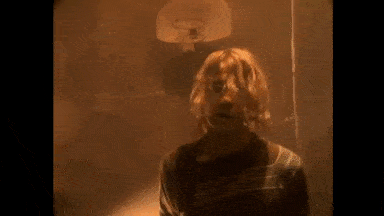
Verses: remember – we had very long and languid (almost dreamy) phrases in the verse
Chorus: we have shorter, punchier and intense phrases – because of course it “smells like teen spirit!”
The emotion is angst and teenage rebellion reflected rhythmically.
So now – at this point in time of the blog post – I have a challenge for you.
Why don’t you pull out one of your last songs. Maybe the one that’s not getting any traction.
Take a look at the melodic rhythm – rather, put your ear on it.
Be honest. Do you have an infectious, locked in melodic rhythm in either of your sections that repeats? (Note: It also doesn’t matter if your song is a ballad – because it’s the same concept there too!). Hmm.
As mentioned earlier it’s a matter of a song being organized or disorganized in its melodic rhythm.
At least for me, for my brain to embrace a song and allow it to enter a special domain I reserve only for great pieces of music, my brain needs to receive music that’s organized. Music that’s organized by melodic rhythm. Music that has the God particle of hit songwriting. Then and only then, my brain (and sometimes my checkbook if I’m signing someone) opens up.
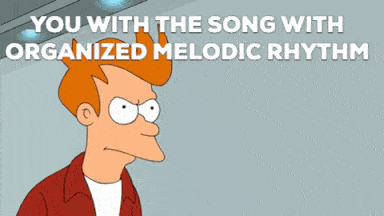
Futurama
Conversely, when I receive disorganized and whatever melodic rhythms (you know, the “W” genre) – my brain is like – get the “f” back to the end of the line.
Melodic Rhythm Origin Story
I actually have a little video from my course, Insider Secrets to Hit Songwriting – where I tell you the real backstory on how I learned and discovered the power of melodic rhythm at Berklee College of Music.
If it wasn’t for this crazy professor who literally carried around a block of wood / chain whistle and with only one note – “toot toot tah toooooot toot” consistently destroying all of us in our improvised solos – I probably wouldn’t be where I am today.
He taught me the vital importance of melodic rhythm. It’s everything. And without it – you have nothing.
Melodic Rhythm 101 and the Strange Tale of the Crack Fox Train Whistle
Lastly, to close out the post, I’ve got one other example to look at – a more recent smash on the charts. And when I first heard this song – to me, it was a no brainer that this one be a global #1 smash.
This artist is not only one of the biggest superstars out there – but he’s also (whether he knows it or not) a master of melodic rhythm. His name is Drake.
Let’s take a look at “God’s Plan.” First – we have the verse (obviously).
Rhythm #1)
I been movin’ calm, don’t start no trouble with me
Tryna keep it peaceful is a struggle for me
Don’t pull up at 6 AM to cuddle with me
You know how I like it when you lovin’ on me
I don’t wanna die for them to miss me
Yes I see the things that they wishin’ on me
Hope I got some brothers that outlive me
They gon’ tell the story, shit was different with me

Drake “God’s Plan”
Here’s what this one rhythm looks like (repeated 8 times, with slight variations)

“God’s Plan” has the God Particle of Hit Making
Now, I can’t say much for Drake’s obviously brilliant (sarcastic people!) rhyme scheme here (yes, he really did rhyme “me” with “me” eight (yes 8) times). But hey – who I am to argue with 2 Billion streams.
What is really cool here is the DNA of the melodic rhythm.
Yes, it’s the God particle of “God’s plan.”
That’s right – that’s your primary key to a hit, a great melodic rhythm – repeated over and over. You see how a great melodic rhythm is a great mnemonic? (A mnemonic is a device and / or a trick to help you remember something). Boom.
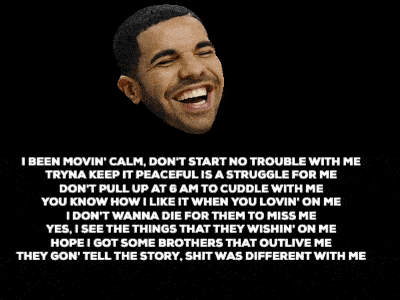
OK. What do we have next – ah yes, a chorus / refrain.
Let’s look at this. Pretty simple.
Rhythm #2)
God’s plan, God’s plan.
Two simple words – mostly one melodic rhythm with a variation on the 2nd “God’s Plan.” Here’s what it looks like.
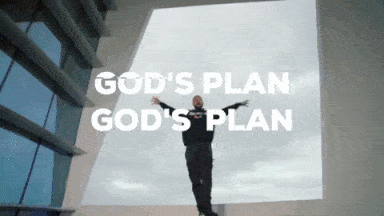
Drake “God’s Plan”

Notice the contrast and variation also going on here! Verse 1 has a long “locked in” melodic rhythm. Yet, the refrain “God’s Plan” is pretty short and has more space surrounding it. (That’s right – don’t forget to treat “space” also as an instrument!).
You see, once you get a real grip and handle on melodic rhythm – you’re like a wizard.
And in your book of spells, the best and most powerful spell you can ever use is Spell #1: melodic rhythm.
Now, if you think that analogy is far fetched – it’s not! Check this out. No doubt that great artists and songwriters are literally casting spells over people, putting them in trances and inducing them in different states! Yah … you’re a wizard, Harry!
So yes, you and friggin’ Gandalf have a lot more in common than you might think.
But we’re not done.
My last gift for you on this post – is a playlist of some of my favorite melodic rhythms. Not only are these my favorite songs – they’re also, at the core, examples of great uses of this powerful songwriting technique.
To clarify – I rarely ever come away from any of these songs thinking – damn what a hook, or wow – what a great melody – but no, I’m usually the only one saying “Dahmm – what a great melodic rhythm!”
Put your dome around some of these!
Writing Exercise!
Homework!
Yes, this post wouldn’t be complete without a writing exercise and/or homework assignment!
Here’s what I’d like you to do. And I can almost promise – if you really do this and pay attention to melodic rhythm – your songwriting is going to go next level / through the roof.
Exercise 1:
For the next week – place melodic rhythm at the very forefront of your mind.
That means that if you’re driving in your car and listening to the radio, or shopping in the supermarket, or better yet – listening to your all time favorite songs – put your intention solely on melodic rhythm. What’s going on there?

Really focus on this.
Is there a locked in melodic rhythm? How is it being used? Is this device just in the verse or maybe just in the chorus – or is it in all sections? Is there contrast between the melodic rhythms in each section? Is there more use of space in one of the sections?
As we discussed previously – are there longer lines in the verse, shorter lines in the chorus (or vice versa)? What about note values – long notes in the chorus, fast notes in the verses etc. That’s part of the contrast game also at work!
Exercise 2:
Take a look at your own songs. Pick your top 3 most popular songs.
Maybe these are ones that are getting streamed the most or maybe if you’re a professional songwriter – these are the songs that got placed and recorded by another artist (maybe even quicker than you expected!). Maybe they are on the charts already!
Now take a look at your … um, clunkers. You know the ones. The ones you wrote 3 years ago that have no action. The ones you won’t even play your mom.

Schitts Creek
I have a hunch – in your “winning” songs – you’re already incorporating melodic rhythm – you just might not know it yet. And I bet your others – you know, your “whatever” pieces – might just be pretty disorganized in that area.
Am I right?
Exercise 3:
OK – this is an actual writing exercise!
At your next songwriting session – either just yourself – or with your co-writers, approach songwriting from a rhythmic perspective first.
Forget about melody for a second – instead just focus on and create an amazing melodic rhythm, one that’s lighting in a bottle, maybe even a call and response, whatever lights you up!
Stay up to date on must read, new articles, courses and special offers.
First – just improvise, jam, write the melodic rhythm over the beat! No melody or lyrics yet.
The only rule is – just make sure your melodic rhythm is ORGANIZED and repeated. AND ideally LIGHTNING IN A BOTTLE!
And yes, this could be as simple as just one melodic rhythm per section of your song.
Start there and then in your other sections – play with some contrast!
Next, when you have the skeleton and the blueprint of your future hit – then and only then – go back and create (or to continue the analogy “skin”) some melodies and lyrics on top of this framework.
My hunch is you might be standing on a few sticks of dynamite with this new melodic rhythm structure fueling the DNA of your song hit!
$1 Million Dollars. There you have it. I just gave you the magic spell book and the most important secret (in my opinion) of hit songwriting.
And remember – this applies not just to popular hits. Go back in any genre and any decade, your favorites or your friends – and you’ll find melodic rhythm rearing its beautiful head time and time again.
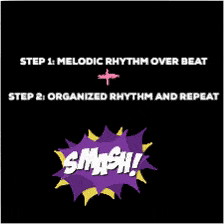
Now, this is just one page of the wizard’s book. In my view there’s really a magical trio to hits that makes it all happen.
The Hit Songwriting Trio
- Melodic Rhythm (covered in this post)
- Second Melody – check out the full post here. There’s also a psychology to this concept as well, which is – the brain loves to hear more than one melody at the same time. Translation – make sure your song has an underlying 2nd melody – aka “the riff” vs just chord / strum / chord. Go here to find out more of what I’m talking about.
- Lastly – A unique concept, song title, or lyric that evokes an emotion. Yes, we’re talking lyrics here – but moreso the importance of a next level concept / song title.
BTW it’s no mistake that all the songs mentioned in this blog post – mostly have the “magic trio.” In other words – all those 3 elements just described. I can’t make this stuff up.
There you have it … if you made it this far – give yourself a hand – think of that historical piece of music you’re about to write and / or the future beautiful house by the ocean you’ve always wanted.
Melodic rhythm is going to make it happen for you and be your wizard companion.
Trust me.
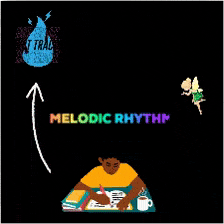
Yours truly,
Benjamin the Brown (yes, that was a geek speak / reference to Gandalf the Grey)
